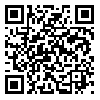BibTeX | RIS | EndNote | Medlars | ProCite | Reference Manager | RefWorks
Send citation to:
URL: http://rjms.iums.ac.ir/article-1-1184-en.html
Background and Aim: Hypocalcaemia has been reported as a complication of phototherapy especially in premature neonates. However, the cause is unknown. The aim of this study was to evaluate the relation between serum and urinary levels of calcium in neonates under phototherapy and to answer the question that whether phototherapy-related hypocalcemia is associated with hypercalicuria or not.
Patients and Methods: In a prospective cross sectional study, 50 icteric newborns (30 males and 20 females) that were treated by phototherapy entered the study through non accidental sampling. The consent was taken from parents on admission. All were breastfed. Weight was checked. Serum samples for calcium and bilirubin and urine samples for calcium, creatinine and osmolality measurements were sent on arrival (group I), after 48 hours of starting phototherapy (group II) and 24 hours after discontinuing phototherapy (group III). Hypercalciuria was defined as Uca/Ucr >0.8 mg/dl/mg/dl, hypocalcemia was defined by serum calcium less than 8 mg/dl in the term and less than 7 mg/dl in the premature neonates.
Chi square test, Repeated measure test, Wilcoxon signed rank test and multivariate were used to compare frequency, means, median and correlation, respectively. P < 0.05 was considered significant.
Results: Between 2004 and 2005, 50 healthy newborns (27 premature and 23 term) with mean age of 7.42 days (range 2 days – 28 days), gestational age 36.8 weaks (range 29 wks – 40 wks), weight 3051 gram (range 1500 – 4300 gr), serum bilirubin 19.7 mg/dl (8.5 – 28 mg/dl) and serum calcium of 8.8 mg/dl (range 7-11 mg/dl) were included in study. Mean serum calcium levels in groups I, II and III were respectively 9, 8.65 and 8.7 mg/dl. Also mean of Uca/Ucr in groups I, II and III was 0.03, 0.85 and 0.60 mg/dl/mg/dl, respectively. Similarly mean of Uca to Urinary Osmolality (mg/dl) in groups I, II and III was 0.05, 0.09 and 0.07 mg/dl/mosmol/kg/H2O respectively. Hypercalciuria was detected in 6% in group I, 52% in group II and 32.7% of group III. None of them showed hypocalcemia. Based on Wilcoxon Signed Rank test, there were significant statistical disperences inregard to the median of Uca/Ucr between groups I and II, I and III and II and III (P<0.05). Hypercalciuria was mostly detected in premature neonates. Hypercalciuria was not correlated with age, weight, sex, serum bilirubin, urine osmolality or serum calcium (P>0.05).
Conclusion: According to the results of this study, neonates who are treated by phototherapy are at the risk of hypercalciuria. Further investigations for example follow up renal sonography, clarifying the importance of this phenomenon is highly recommended.





